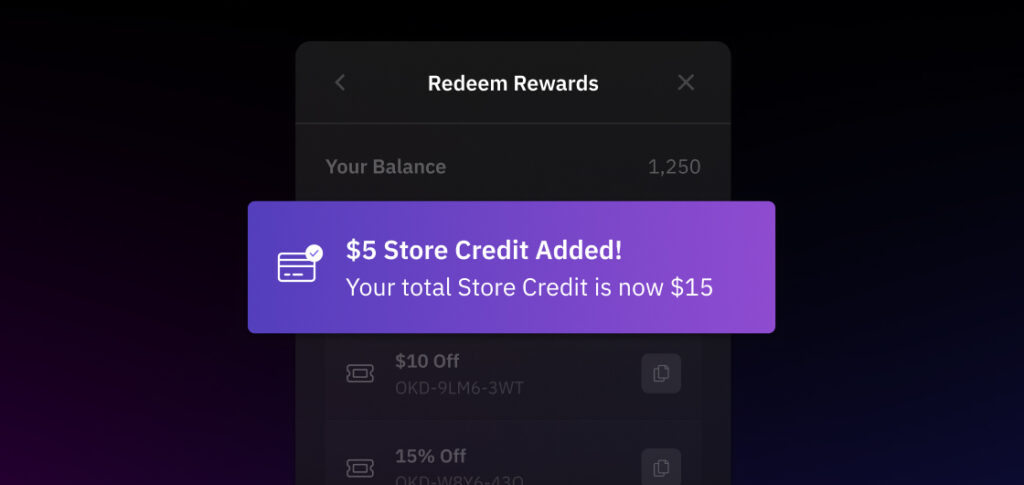
- Customer Loyalty
- Loyalty
- Product
Simplify reward redemption with Store Credit
Katie Vaught | Apr 22, 2025
Sep 27, 2024 | 10 minute read
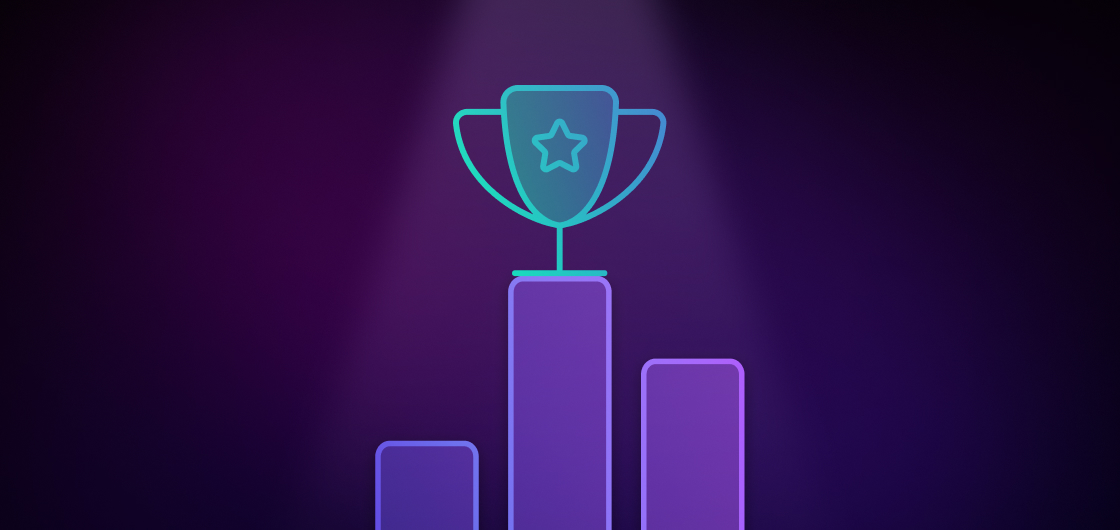
Matt Goodman
Co-founder, CEO
Customer loyalty programs can significantly boost customer retention and revenue. Keep reading to explore different types your brand can implement.
Many brands—from large mega-retailers to bespoke small businesses—have a loyalty program. There’s a good reason for this: brands can see big results using loyalty programs to develop customer relationships and drive revenue. However, not all loyalty programs are created equal — the engaging program is the one where your brand will see long-term growth. In this blog, we’ll explore different types of loyalty programs and highlight five of the best.
A customer loyalty program is a marketing strategy that encourages repeat customer purchases. This is done by offering incentives like points, discounts, exclusive offers, or other rewards. Loyalty programs offer brands an opportunity to capture zero-party data, which allows for personalized communications, tailored interactions, and positive experiences—all of which foster loyalty and drive retention.
Customer loyalty is more valuable than it’s ever been before. Since consumers have a seemingly endless array of options, competition is intense. Additionally, customer acquisition has become more expensive, and customer churn rates are higher, so once a customer is acquired it’s important to keep them coming back. Customer loyalty programs help achieve this by building strong customer relationships and making repeat business more enticing.
With so many loyalty programs out there, it can be hard to stand out. Here are five examples of successful loyalty programs that have managed to cut through the noise and keep consumers coming back.
With so many loyalty programs out there, it can be hard to stand out. Here are five examples of successful loyalty programs that have managed to cut through the noise and keep consumers coming back.
THE DETAILS
The apparel brand, Dixxon, has created a robust point-based loyalty program that rewards customers for their purchases and engagement. Their four-tiered system (Amateur, Pro, Legend, and Hall of Fame) offers a variety of perks based on annual spending. Members earn points for every dollar spent, or by completing tasks like writing a review or following the company on social media, which can then be redeemed for a discount on future purchases. As they move up tiers, members gain access to other perks like an anniversary reward, double points days, free economy shipping, and (for the highest tier) an exclusively designed flannel—which acts as motivation for members to keep moving up tiers.
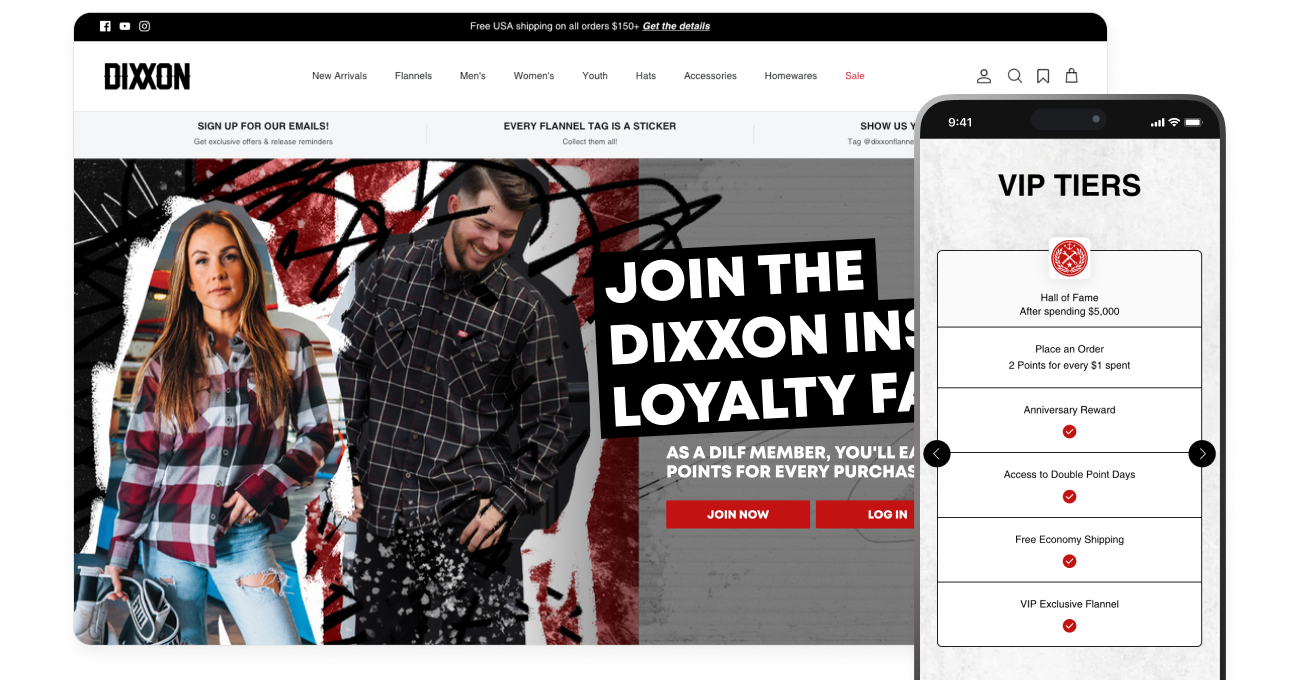
THE STRATEGY
What sets Dixxon apart is they give their members points for backdated orders from the previous 12 months from before the launch of the program. This gives customers a head start towards earning discounts and moving up tiers. As a promotional strategy, Dixxon lets customers know how many points they have waiting for them in the program. Dixxon creatively named their program the Dixxon Insider Loyalty Fam (DILF).
THE RESULTS
This strategy is working very well for them. After successfully promoting the program before launch, Dixxon saw 5,000 enrolled members within 24 hours of launching the program. On average their loyalty members place up to six orders compared to non-members, who place up to two orders. Dixxon witnessed a 16x ROI with its loyalty program.
Jordan Craig, an elite streetwear brand, offers a point-based tiered loyalty program designed to resonate with their unique customer base. Members earn points (or “clout”) for purchases and engagement with the brand, which can be redeemed for discounts. As members climb the tiers (Pro, Star, and Legend), their rewards increase, including more points per dollar spent and more points per activity (i.e. leaving a review). The program also integrates the brands’ digital credit and debit cards into their program, offering more points for signing up, and when the card is used.
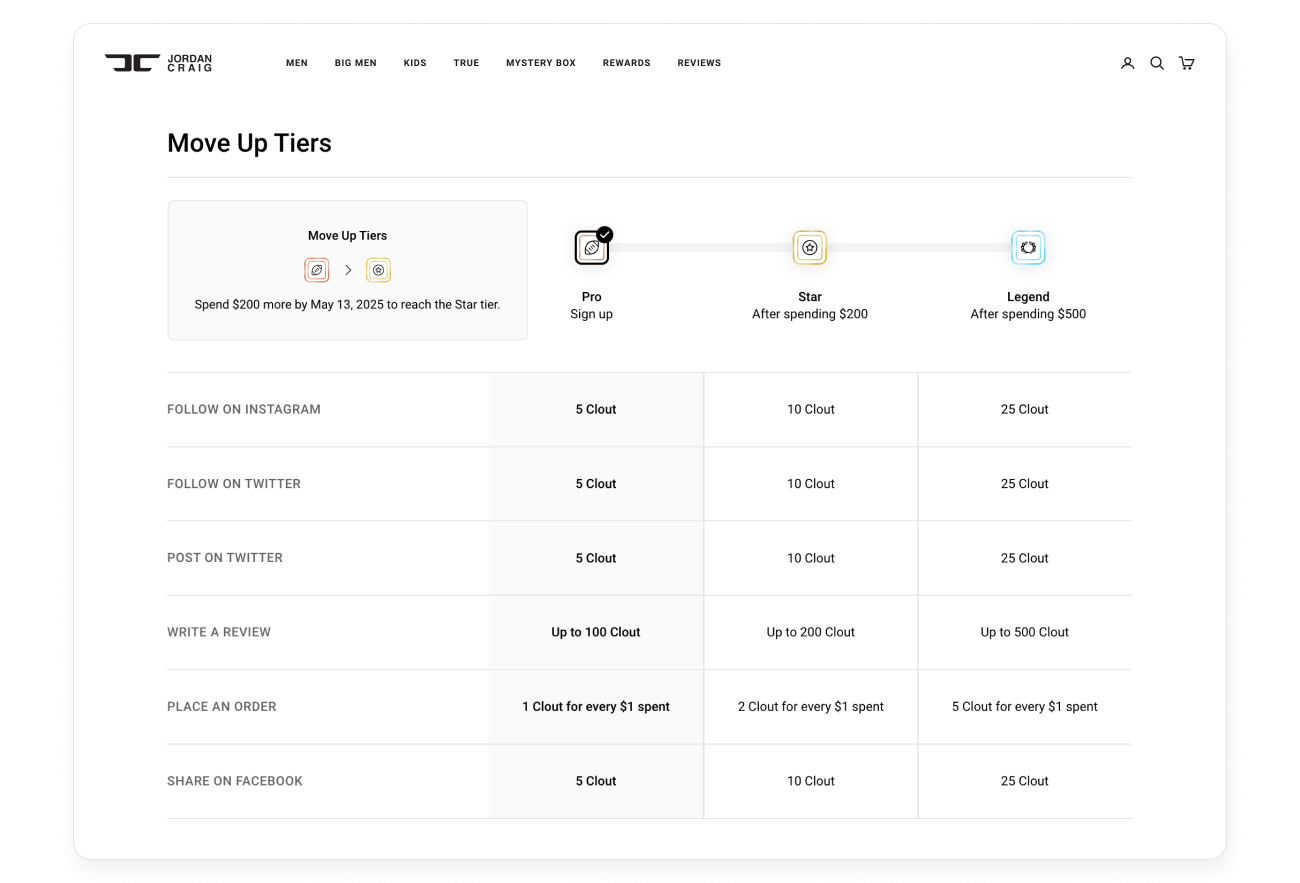
THE STRATEGY
Jordan Craig created a customized loyalty program that aligns with their brand identity and reinforces their “cool” factor, creating a sense of authenticity. The program also serves as a strategic tool for Jordan Craig to identify and communicate with their top customers, those in the Legends tier. These highly engaged customers make repeat purchases and actively participate in brand-related activities. To enhance their experience, Jordan Craig utilizes Klaviyo to segment these customers to deliver tailored email messaging. This includes exclusive offers and early access to sales, further strengthening the bond with their most loyal customers.
THE RESULTS
The loyalty program has been incredibly successful for the brand. They’ve experienced a 12.23% AOV uplift since implementing these customizations, a 59X ROI, and a 4% program enrollment rate. On average they’ve seen a 68% repeat purchase rate for loyalty program members, as compared to 21% for non-members.
THE DETAILS
Outwork Nutrition is known for offering customers cutting-edge, science-backed supplements that enhance their customers’ training goals. The brand had a goal of its own: to create a straightforward loyalty program that increased customer engagement. The brand focuses on direct rewards. Members earn five points for every $1 spent, and can earn points for engagement activities like leaving reviews. Points are redeemed for cash back on future purchases ($1 for every 50 points earned).
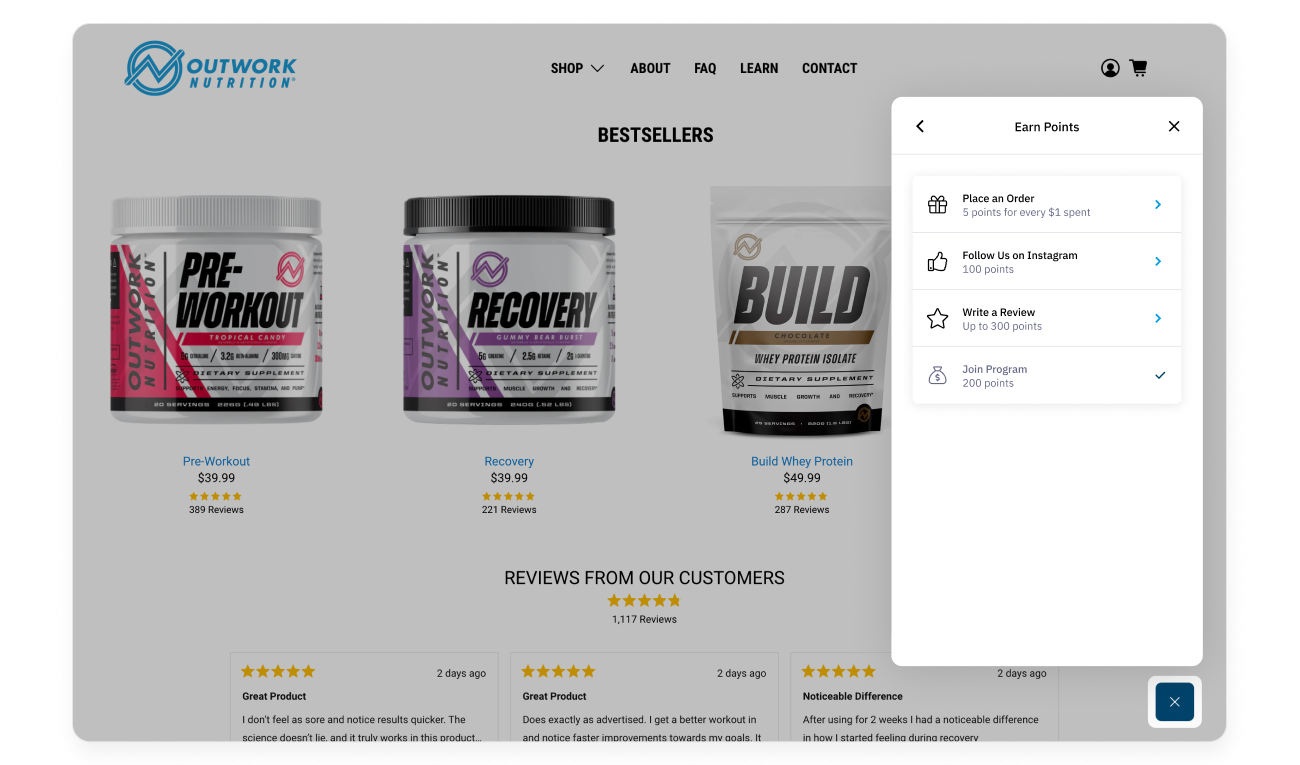
THE STRATEGY
Outwork Nutrition set out to make day-to-day operations more efficient by having their reviews program work seamlessly with their new loyalty program. Using Okendo, they were able to consolidate their programs and create a straightforward, accessible program that customers appreciate.
THE RESULTS
The Outwork Nutrition Loyalty Program is simple, but effective, and has been well-received by the brand’s customer base. The brand saw a 19% AOV uplift within 30 days of the program’s launch, a 10% customer enrollment rate, and witnessed a 67x ROI. They also experienced a 75% coupon usage rate from their customers.
THE DETAILS
Taste Salud creates electrolyte drink mixes that provide customers with a boost of hydration, immunity, and flavor. They’ve created a tiered loyalty program that rewards their customers with points that can be redeemed for discounts on purchases (100 points = $5 discount). Members earn points for every dollar spent and through engagement with the brand. As members climb the tiers (Pre-Game, Happy Hour, Fiesta, and After Party), they earn more points per dollar spent, providing motivation to level-up.
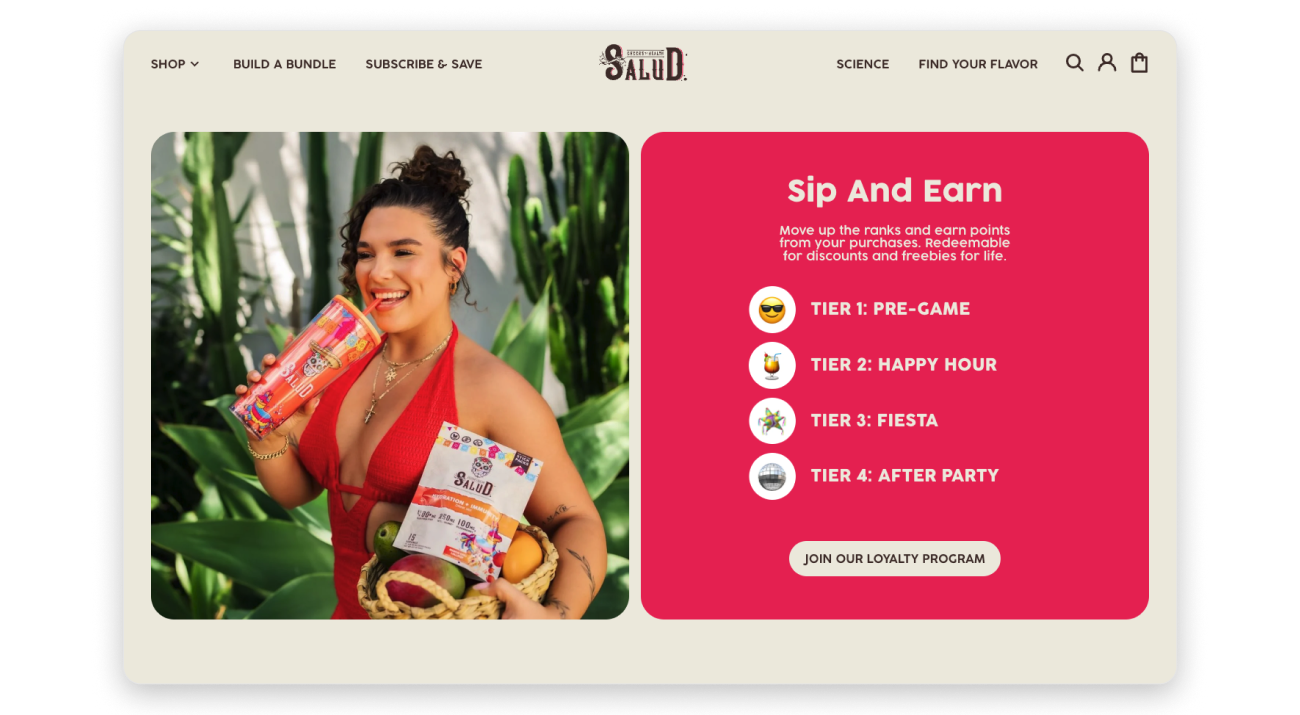
THE STRATEGY
Taste Salud’s loyalty program is more than just a rewards system; it’s a celebration of the brand’s fun-loving spirit. The customized program reinforces its “party” messaging through customized tier names, and motivates customers to become active participants in their brand community. With meaningful rewards that can be directly used to save on purchases, Taste Salud’s program demonstrates their commitment to providing value and appreciation to their customers.
THE DETAILS
Women’s apparel brand, SABO, designs clothing with a luxury resort style. Their customized loyalty program invites customers to immerse themselves in their exclusive, vacation-inspired aesthetic. Through Sabo Resort, their tiered points-based system, members earn points for every dollar spent and through engagement with the brand. As members ascend through the tiers (Weekender, Member, Resident, and Secret), they earn more points per dollar spent, and other perks like early access to collections, sales, free shipping, entries into monthly competitions, and can unlock exclusive experiences.
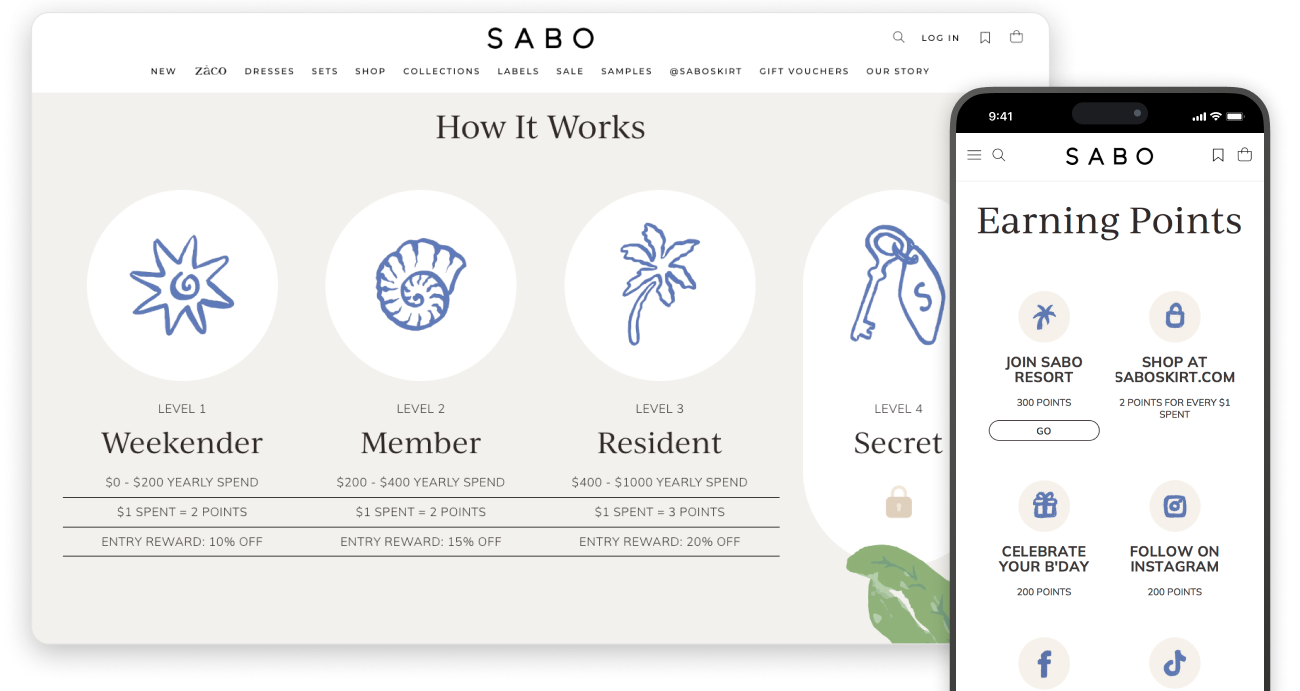
THE STRATEGY
Sabo has set itself apart by not only creating a program with meaningful rewards that fit its brand voice but also by creating a “Secret” tier. The benefits of this top-level aren’t revealed until customers make an annual spend of over $1000. This strategy targets emotions like delight, surprise, FOMO, and anticipation. The prospect of unlocking access to an exclusive club with secret benefits motivates customers to spend more and engage more with the brand.
There are many different ways customer loyalty programs can work, however, most fall into four main categories: Point-based, tiered, paid, and referral.
Points-based programs are the most common type of loyalty program. Customers accumulate points which can then be redeemed for rewards. Points are usually earned through purchases (i.e. 1 point per dollar spent) or through completing “activities” like leaving a review, visiting a retail location, or sharing a social media post.
Tier-based loyalty programs offer different levels of rewards to customers based on their ranking. Tiers are usually based on how much a customer has spent, but can also be measured by other metrics like engagement. To move up tiers, customers must reach certain milestones. This loyalty strategy works by making top customers feel like they’re getting the most value out of a brand (they know they’re getting the best and most exclusive rewards), and gives those in the lower tiers a goal to aim for.
Paid loyalty programs, or subscription loyalty programs, require their members to pay a recurring or one-time fee in exchange for instant benefits that can be used at any time. With this type of program, customers get instant gratification (no waiting for rewards to accumulate). This loyalty strategy works by incentivizing members to make the most of their paid-for program, resulting in repeat business.
Referral loyalty programs encourage customers to share their brand with friends or family. When an existing customer refers a new customer who makes a purchase, the original customer receives a reward from the company. According to Okendo’s research on loyalty and retention, 70% of customers are more likely to refer a brand if they receive an incentive. This loyalty strategy works by using word-of-mouth to grow the brand’s customer base, while also strengthening its relationship with its existing customer.
Having a successful loyalty program is an essential part of building customer relationships, increasing customer retention, and driving sales. When building your own loyalty program, there are a few key factors to take into consideration:
Cultivating a successful loyalty program can be a challenging task. That’s why we built Okendo Loyalty to help brands easily set up a fully customizable loyalty program. Our tools make it easy to offer rewards that members will love—keeping them coming back again and again. Our platform collects customer data in a straightforward, comprehensive profile that allows brands to access critical zero-party data. This can be leveraged to create highly personalized marketing campaigns, such as targeted communications and relevant product recommendations. By understanding customer behaviors, catering to their preferences, and using collected data to improve the overall customer experience you can drive sales and turn customers into revenue-driving Superfans. Book a demo to learn how Okendo can help you create and improve your loyalty program.
While some brands make thriving customer loyalty programs look effortless, their success is anything but. A successful loyalty program relies on a brand’s understanding of its customers and what kind of loyalty program resonates with them. They offer meaningful rewards, while also creating a sense of value, connection, and community. By building a loyalty program that aligns with your brand objectives and is adaptable to evolving customer preferences, you can create an impactful program that boosts retention, drives sales, and turns customers into highly engaged Superfans.
Related articles
Ready to learn more?